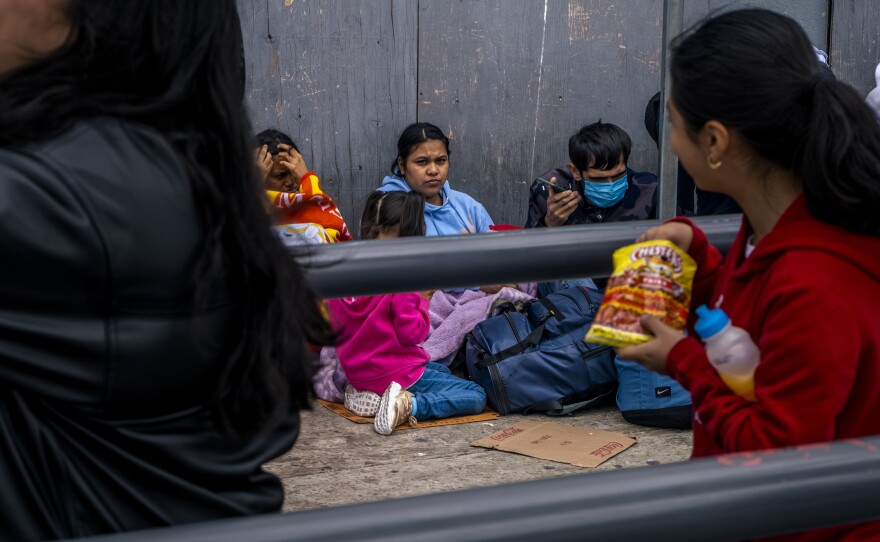Less than a month after changes to federal asylum policy, hundreds of asylum seekers are living in a makeshift camp on the Mexican side of the San Ysidro port of entry.
On Thursday morning, 170 adults and more than 80 children were sleeping on the concrete next to the pedestrian lane of the busiest border crossing in the country. They include people from Mexico, Nicaragua, Venezuela, Uzbekistan, Kazakhstan, Russia, and Colombia.
The majority of these people would have been turned away at the border because of the pandemic-era restriction known as Title 42, but the Biden administration ended the restriction in May.
Officials are encouraging migrants to use the CBP One mobile app to schedule appointments to enter the country. But the people sleeping outside San Ysidro said the app isn’t working for them.
“I’ve spent three months trying to get an appointment, nothing,” said a Honduran migrant who declined to share his name because he does not feel safe in Tijuana. Other migrants have been robbed, beaten, kidnapped and killed there since Title 42 was implemented in March 2020.
The man slept outside for three days before finally crossing into the United States on Wednesday.
“You have to suffer to get what you want,” he said before crossing.
As of May 10, U.S. Customs and Border Protection says it expanded the number of daily appointments in the app, gave people more time to complete appointment requests, and prioritized people who have been waiting the longest.

Immigration lawyers criticized the camp’s conditions.
“We had moms and babies sleeping on the concrete floor, kids screaming and crying because it was freezing,” said Lindsay Toczylowski, executive director of the Immigrant Defenders Law Center.
Toczylowski first noticed migrants waiting by the San Ysidro port of entry on May 26. There were only a few families then. On Thursday, the camp had ballooned to more than 200.
A small team of staff from Immigrant Defenders talked to dozens of migrants at the camp. Most of them felt an imminent danger in Tijuana and had unsuccessfully tried to get appointments through the mobile app, Toczylowski said.
“Some of them had registered back in January 2023,” she said. “Which is an inexcusable amount of time to have people sitting in dangerous conditions in shelters in Tijuana waiting.”
One Mexican woman Toczylowski spoke with was fleeing an abusive relationship. Her abuser tracked her down to a Tijuana migrant shelter.
“She left in a panic and went to the port of entry,” she said.
Last month, Immigrant Defenders sued the Biden administration over new asylum restrictions announced after the end of Title 42.
Those restrictions say unless migrants have a scheduled appointment from the mobile app, they are presumed ineligible for asylum.
But even with those new restrictions, people still have the legal right to seek asylum at the U.S. border without being turned away.
“The law is, people who are coming to a port of entry have a right to seek asylum and the asylum ban comes into play potentially years down the road when a person needs to rebut the presumption that they are ineligible for asylum,” Toczylowski said.
That rebuttal should happen in immigration courts before a judge, not at the port of entry with a border official, she said.











